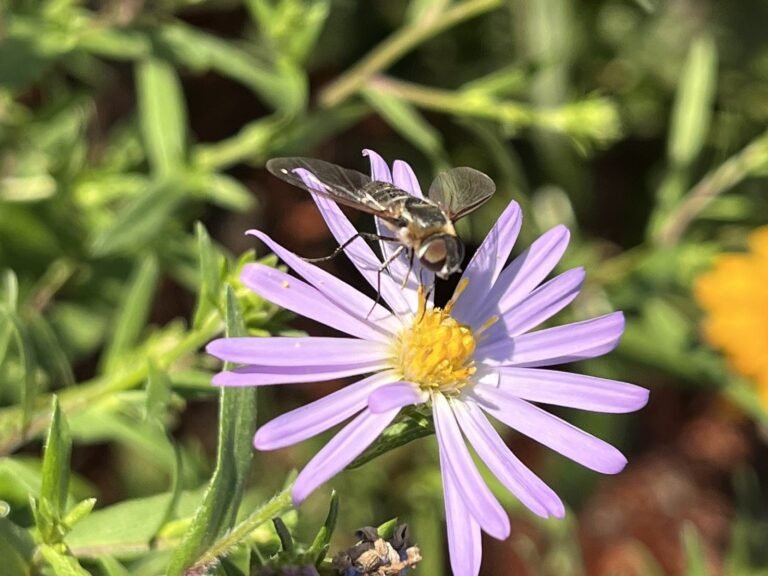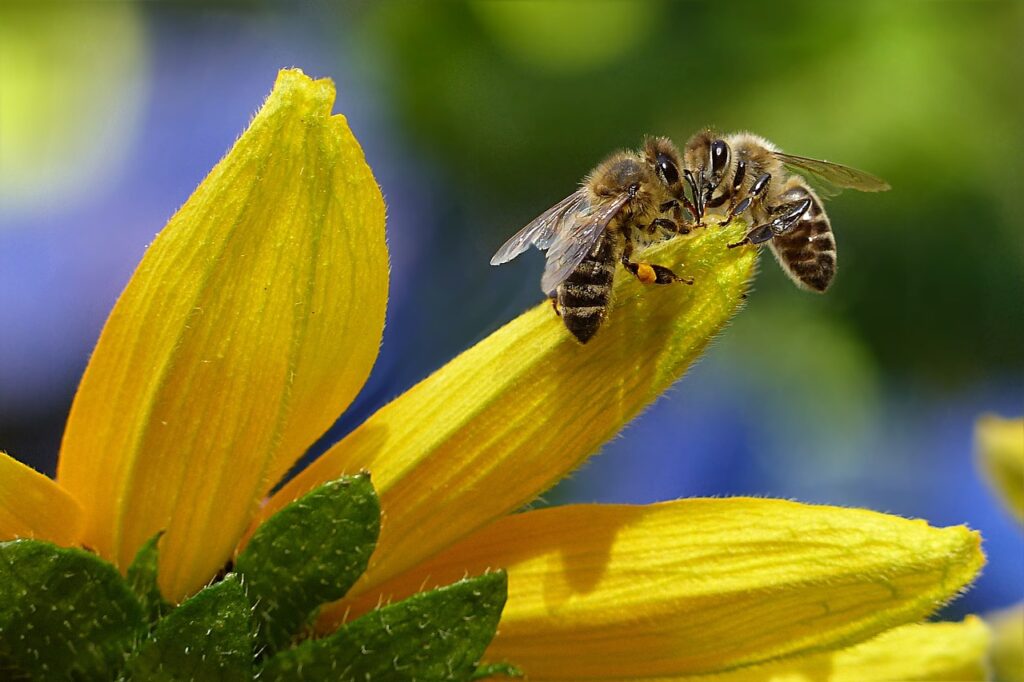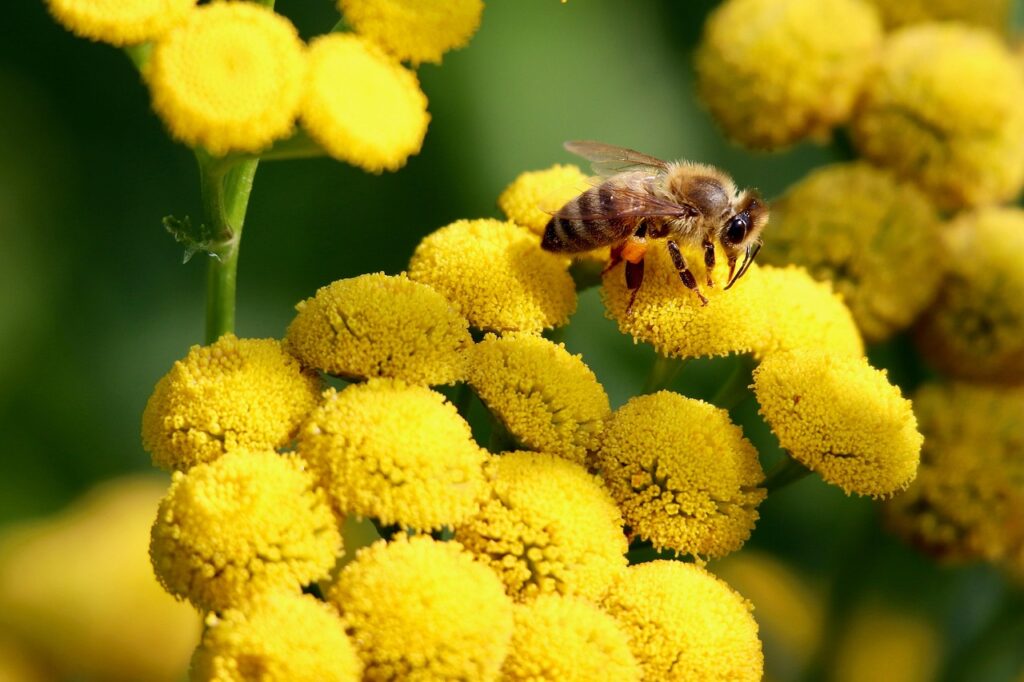Bee-friendly gardening involves thoughtful planting and habitat management to support both honey bees and native wild bees throughout the year. Plant selection, water sources, nesting options, and tree choices all play a crucial role.[1][2][3]
Best Bee-Friendly Gardening Practices
- Select plants that bloom throughout the growing season to provide sustenance from spring through fall.[4][1]
- Group similar plants together in patches (at least one square yard) for easier bee foraging.[5]
- Avoid pesticides, herbicides, and chemical treatments that can harm bees and other beneficial insects.[3][5]
- Leave portions of your garden undisturbed with bare soil, hollow stems, or wood piles for native bee nesting.[2][6][7]
- Deadhead, but allow some plants to flower fully and leave dry stems over winter for nesting.[6][2]
- Choose a diverse mix of native wildflowers, flowering herbs, and garden perennials. Great choices include salvia, monarda, yarrow, echinacea, goldenrod, sunflowers, asters, honeysuckles, lavender, thyme, oregano, borage, sage, black-eyed susans, and clovers.[8][1][5][4]
- For natives: Jacob’s Ladder, spiderwort, blue and creamy indigos, partridge pea, coneflowers, coreopsis, rattlesnake master, goldenrods, native asters, and obedient plant are excellent options for supporting honey bees and wild bees across the seasons.[9][4][8]
- Include early bloomers like crocus and snowdrops and late-blooming asters for sustained nectar source availability.[5][4]
- Provide a shallow water source such as a bird bath with pebbles, stones, or pieces of bark so bees can land and drink safely without drowning.[10][11][5]
- Change water regularly, keep the source in a sunny spot, and allow natural elements like rocks or moss to help bees access minerals and nutrients.[12][11][10]
- Keep water within easy reach—ideally within a few dozen yards of garden plants for foraging efficiency.[12]
- Willows (Salix) offer critical early spring nectar and pollen.[13]
- Black locust (Robinia pseudoacacia) is excellent for honey production and soil improvement.[13]
- Tulip poplar (Liriodendron tulipifera) and maples provide abundant nectar.[5][13]
- Other valuable trees and large shrubs include manuka (Leptospermum), abelia, elderberry, berry shrubs, and sumac, all attracting a wide range of bees throughout their bloom periods.[14][15][5]
These methods promote a thriving, healthy habitat for both honey bees and native wild bees, increasing pollination, biodiversity, and beauty in any garden.[1][3][5]
⁂
- https://www.portlandnursery.com/garden-projects/bee-friendly
- https://www.pollinator.org/bfg
- https://www.xerces.org/blog/how-to-make-pollinator-garden
- https://hamiltonnativeoutpost.com/favorite-native-plants-of-a-honey-bee/
- https://www.beverlybees.com/planting-bee-garden/
- https://extension.oregonstate.edu/gardening/pollinators/maintain-bee-friendly-garden-fall-winter-too
- https://www.reddit.com/r/bee/comments/1h12i6n/how_to_make_my_garden_more_bee_friendly/
- https://extension.oregonstate.edu/catalog/pub/em-9363-native-plant-picks-bees
- https://xerces.org/pollinator-conservation/pollinator-friendly-plant-lists
- https://www.buddhabeeapiary.com/blog/bee-watering-station
- https://www.xerces.org/blog/if-youre-thirsty-theyre-thirsty-make-simple-water-source-to-support-pollinators
- https://www.homesweetbees.com/how-to/2019/9/1/how-to-provide-bees-water
- https://heavenlyhoneycompany.com/the-best-trees-for-honey-bees/
- https://sammysplantworld.com/blogs/plant-care-tips/top-15-trees-and-shrubs-for-honeybees-help-save-the-bees
- https://extension.oregonstate.edu/catalog/em-9391-shrubs-trees-bees
- https://www.fws.gov/story/how-build-pollinator-garden
- https://www.oregonbeeproject.org/garden
- https://www.petittigardencenter.com/best-plants-to-support-pollinator-bees/
- https://www.honeyflow.com/blogs/beekeeping-basics/how-to-keep-bees-hydrated
- https://www.arborday.org/planting-your-tree/trees-bees-and-other-pollinators



